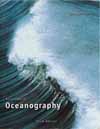Oceanography 201 Notes

David Gallo
5:25 Filmed 3-07
Bioluminescent fish and amazing cephalopods.

Richard Pyle
16:51 Filmed 2-04
Exploring with mixed gas scuba.

Charles Moore
7:23 Filmed 2-09
The problem of plastics in our oceans.

The Big Bang aprox 13.7 Billion years ago.
The first surface on the earth aprox. 4.6 Billion years ago.
Oceans formed aprox.4 Billion years ago.
Pangaea (the Super continent)
The oceans may have coverd the earth ofr aprox. 200 Million years before any continents emerged.
Latitude (horizontal) and Longitude (vertical). Geographical coordinate systems.
Latitude one degree latitude = 60 nautical miles. 1 minute latitude = 1 natuical mile. Longitude zero is Greenich England 180 is the prine meridian.
John Harris developed chronographer (need for longitude calculations).
Vertical pole at Alexandria (aprox. 200 B.C.) calculated the eath to a sphere within 8 degrees.
Lithosphere
Asthosphere
Mantle
Mid Ocean Ridge circles the earth. Abysal Plains (usually very muddy and flat). Sea Mounts (Guyots) flat on the top. Trenches very deep (11,022 M deep) contrast Mt. Everest (8,840 M high). Continental shelf has less than one degree of slope.
Convergent where two plates come toegther Divergent where two plates seperate.
Two kinds of crust: Ocean (Basalt) (not very dense) and Contienental (Granite) (very dense). Rock holds heat making the contiental crust warmer.
Three types of plate boundries.
Hot Vents (discovered by Alvin Sea of Cortez) Chemosytnesies (lots of sulfer) Cold Seeps
3 Types of Rock
Igneous
Sedimentry
Metamorphic.
Radioactive Dating counts the samples half lifes. Different Radisotopes have different half lives.
3 Major Geological Times
Cambrian
Panerozoic (Paleozoic & Mesozoic)
Cenozoic
Where did Oceans come from? About 4 billion yrs ago water vaper released by off gassing (condensed as rain) and comets hit earth & melted.
Prokaryotic (no cell nucleus) & Eukaryotic (have cell nucleus) Cells.
Light (waves) in the Ocean. Red is very readibly absorbed by water, while Blue survives the best. Light is converted into heat, and doesn't get below 3,000 Meters.
Sound (waves) in the Ocean. Average spped of sound 3,345 mph. Speed decreases with depth.
The test to determine the ammount of saltyness is called Chlorinity.
Eckman Spiral Model: Water driven by surface winds go arpx. 90 degrees to the right.
El Nino: Warm water builds in Austrailia until it cannot be contained and it travels east to hit south America. The geographic region experinces a change in weather pattern (southern oscilliation) until the warm water finally disipates and normal conditions return. La Nina: opposite.
Waves: Waves are the transfer of energy that have a circular motion.
- Tidal (One half circufrance of the earth - Gravatational attraction, rotation of Earth)
- Tsunami (125 miles - Faulting of sea floor, volcanic eruption, landslide)
- Seiche (Large and variable - Changes in atmospheric pressure, storm surge, tsunami)
- Wind Wave (200 -500 ft. - Wiind over ocean)
- Capillary Wave (Ripple)
Fetch: The ammount of undisturbed distance over which the wind blows.
Breaking wave have a "one to seven" height to width ratio.
Latitude - Horizontal
Longitude - Vertical




